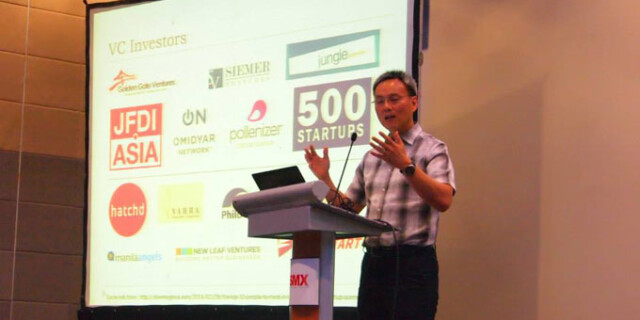Philippine e-commerce
In the past few years, e-commerce in South East Asia has become huge, attracting over US$500 million in investments for 2013 alone. However, how is Philippine e-commerce faring in this great new wave in the region?
Unsurprisingly, we haven’t been doing all that well.
The key challenges that the local e-commerce industry is facing are quite easy to pinpoint:
- Poor access to mobile Internet
- Lack of payment methods
RentPad founder Chux Hizon thinks that people are now going mobile, according to a market research they did. RentPad is a Philippine property marketplace startup.
Still, compared to how their Southeast Asian neighbors are using the Internet, very few Philippine people are browsing the web on mobile devices. A Nielsen study on smartphone penetration says that the Philippines has one of the lowest mobile penetration rates in Asia; just 15 percent. Out of that, only a portion are using smartphones to visit their favorite websites. A different study from Search Engine Optimization firm Forward, shows that only 40 percent of Filipino Internet users access the Internet on their smartphones or other mobile devices.
Are Credit Cards The Way To Go?
For businesses, just setting up an Online presence is enough of a challenge. Doing e-commerce on top of that is a whole order of magnitude more effort-consuming (at least it is if you’re doing it right).
The fact that there are just not enough Filipinos with credit cards is an additional burden that often pushes businesses, especially small and medium ones, to let go of their e-commerce goals. Just imagine, only 27 percent of the Philippine population owns some form of a bank account, and only 3 percent have a credit card. If you’re a business owner, and you do the typical way of selling online – through credit cards only – you may have already failed to reach a big swath of your potential market.
Alternative Payment Methods
DragonPay‘s Robertson Chiang claims that Philippine e-commerce started to ‘boom’ when daily deal offers began to get traction.
Robertson Chiang, founder of payment gateway firm DragonPay, says that Philippine e-commerce rose from slumber when daily deal websites gained popularity.
It was the time that people wouldn’t mind trying it out, people started making risks. But a lot of people didn’t have credit cards and this was a big problem. Today, for any e-commerce business to prosper, they have to consider alternative payments mobile payments, rural bank payments – and is a major component.
DragonPay launched in the Philippines in 2010 after a huge wave of daily deals sites emerged. It now provides alternative payment services, helping both consumers buy what they want from Online stores and daily deal websites and business owners who want to reach a wider audience.
Chiang says that he believes this helps increase the number of e-commerce transactions in the country. According to him, 30 percent of Philippine e-commerce transactions have been processed through alternative methods of payment.
These alternative payments range from conventional credit card online payments, to physical ATM transfers, to over-the-counter payments at your local bank’s branch. This could mean more options to both consumers and business owners, and help pave a wider and more open road for Philippine e-commerce to grow.
There’s still a catch, though. Chiang adds that 95 percent of the volume of Philippine e-commerce comes from Metro Manila alone. Other large cities like Cebu, Naga and Davao only accounted for a measly 2 percent.
This is not surprising, given the state of how employment is distributed across the country. Because the largest and best paying employers are in Metro Manila, the pattern of buying is expected to peak in the capital. This however also means that there’s a huge chunk of the market that remains untapped.
Through alternative methods of payment like RuralNet, it can be hoped that more people get access to Philippine e-commerce; and with the improvement of mobile Internet usage, buying online can become easier.
What More Can Be Done?
While increased mobile internet penetration and third-party payment solutions can help speed up the development of Philippine e-commerce, there are other ways the tech community can work together to improve the experience.
Chua shares that startups in the Philippines need lower taxes and better ways to manage government regulations – according to a poll he conducted in the Startup PH Facebook group. He adds:
While the Philippines is looking at increasing taxes, Singapore and Hong Kong are outdoing themselves to see who can lower their taxes even more. If the government doesn’t get their act together then the entrepreneurial spirit in the Philippines will go to Singapore or Hong Kong, and the Philippines will lose the chance to make the next Google or Facebook.
Despite all this, Philippine e-commerce is an exciting business to be in. Optimism in technology is generally on the rise all over the country, and more people are becoming interested in how the Internet can help improve their daily lives.
The benefits of transacting your business online are many and varied, even if there are challenges ahead. Maturity, though still quite far, is on its way for Philippine e-commerce. Just the exposure you get from having your store open 24/7, your customers being able to initiate contact with you anytime and anywhere, are just some of the many great advantages.
If you’re a small or medium enterprise owner, an e-commerce website isn’t as difficult to set up as you might think. In fact, we’re here to help make it as simple, straightforward, and profitable as possible, as quickly as possible. Contact us now to find out how we can help your business sell Online.
(Photo: DigitalFilipino Facebook page)
